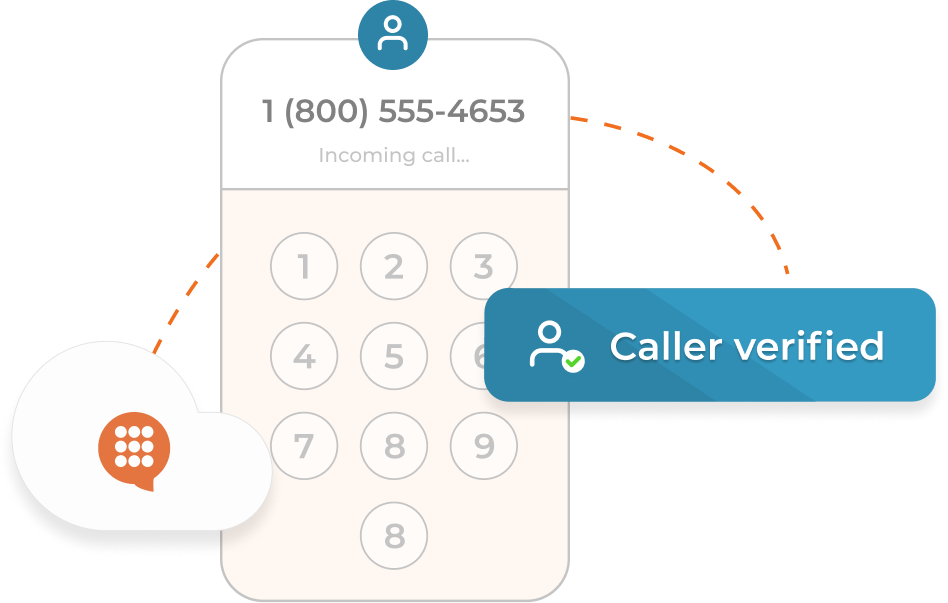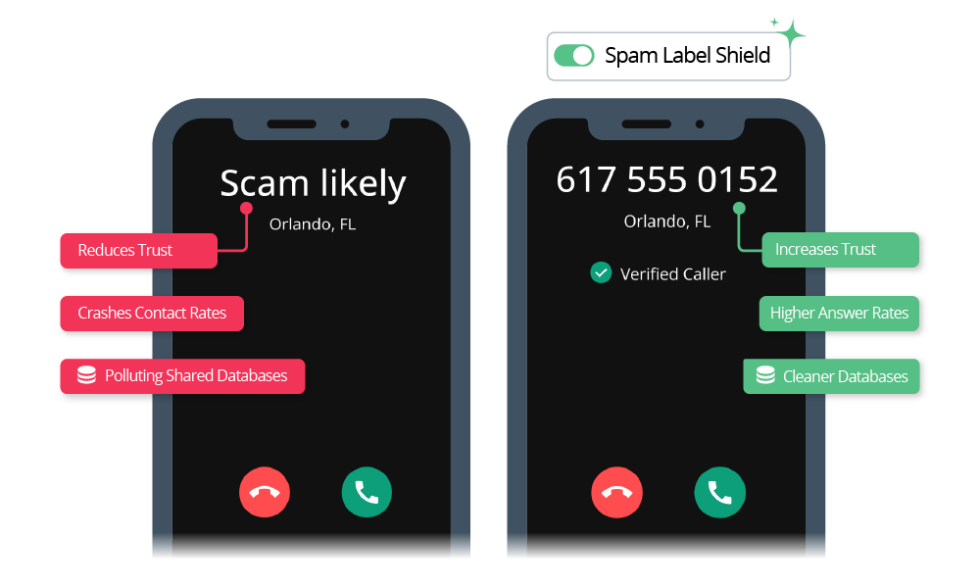In today’s fast-paced digital world, telephone fundraising remains a vital tool for nonprofit organizations to connect personally with potential donors. Despite the rise of online fundraising platforms, a well-executed phone call can make all the difference in securing donations and building lasting relationships. But how can your organization maximize its fundraising success through phone calls? This guide on how to ask for donations will walk you through the necessary steps and best practices to effectively ask for donations over the phone, ensuring a positive experience for both your organization and its supporters.
Key Takeaways
- Adhere to best practices for telephone fundraising, such as SHAKEN/STIR registration, avoiding flagged numbers, using recognizable caller IDs, and segmenting mobile and landline numbers.
- Demonstrate empathy, ask for time respectfully, and be knowledgeable when asking for donations over the phone.
- Listen actively to build genuine connections with potential donors before sending donation links.
How to ask for donations over the phone?


Data source: TrueSense Marketing.
Telephone fundraising serves as a vital channel to connect with potential donors and secure the needed funds for your nonprofit’s success. The key to successful solicitation for fundraising event lies in five crucial elements:
- Empathy
- Asking for time
- Knowledge
- Listening
- Using a fundraising script when appropriate
Mastering these elements equips you to build meaningful connections with potential donors, inspiring them to back your organization’s mission.
1. Be empathetic and understanding
“We practice empathy when we stop to ask ourselves: what do I really know about what this donor cares about — not related to our work, but related to theirs? What [are] they worried about? What keeps them up at night? Who [are] they as a person?”
– Amy Varga, fundraising expert and consultant.
A 2011 study has shown that empathetic concern between a fundraiser and individual donors while asking for donations has a positive impact on the latter converting.
Nonprofits typically have a database of donors with their basic information and donation history in place. But you must know them as a person, not merely a donor, to really empathize with what will move them to support you. To achieve genuine empathy with your small and major donors, you must research them thoroughly before asking for donations over a call.
2. Ask for their time
Respecting a donor’s schedule is crucial for a productive conversation. Asking for their time communicates your genuine interest in discussing your organization’s mission with them. Politely inquire if it is a suitable time to talk and be prepared to schedule a call for a more convenient time if necessary.
This enhances your chances of securing their support and leaving a lasting impression.
3. Know what you’re talking about
Your supporter’s intrinsic motivation is going to drive them to donate more than your organization’s mission. However, you must still have a thorough understanding of your cause and organization. Supporters will ask you questions when you make fundraising appeals. These can vary from your organization’s mission to specific donation requests and donors invested in your cause to your donation process.
In your query about how to ask for donations over a call, make sure this bit takes a top position to truly encourage potential donors.
Regular practice and a structured approach to phone conversations can also help build confidence and professionalism in your interactions with potential donors.
Read Next: The Essential Qualities of an Online Donation Form
4. Be a good listener
Listening attentively to donors’ concerns and interests is essential for tailoring your pitch and addressing their needs. This is especially true for supporters targeted for major gifts (or major donors). Active listening techniques, such as:
- Remaining present
- Focusing on the prospective donors
- Restating key points
- Asking open-ended questions
Actively listening to the donor boosts communication and collaboration and tells the agents where the supporter is hooked and what will help them raise money. Soliciting donations is not just about asking for money but about securing real, long-term relationships during your fundraising efforts.
5. Have a script… But know when not to use it


Having a script provides structure and direction, ensuring that important points are covered during the call. However, relying too heavily on a script can hinder the development of genuine connections with donors. As we mentioned, fundraising efforts are about building real relationships with potential donors, not parroting off a generic script.
The key is to strike a balance between using a script to guide the conversation and being flexible enough to adapt to the donor’s interests and concerns.
Discover next: Branching Scripts for donation appeals over calls are not linear and dynamic scripts are crucial for telephone fundraising.
How to ask for donations: Best practices for telephone fundraising
Success in telephone fundraising not only depends on mastering the art of asking for donations but also requires adherence to best practices. Implementing these practices will help ensure an effective and productive fundraising campaign:
- SHAKEN/STIR registration
- Avoiding flagged numbers
- Using recognizable caller IDs
- Segmenting mobile and landline numbers
- Sending donation links only after confirming support on the call
Your numbers should be SHAKEN/STIR registered


SHAKEN/STIR registration is a protocol introduced by the Federal Communications Commission (FCC) to reduce the number of spam and spoofed calls that consumers receive. Registering your number for SHAKEN/STIR will give a “verified” badge to your numbers, increasing the chance of your donors answering your calls.
To obtain SHAKEN/STIR registration, your organization must undergo a verification process that includes signing calls with varying attestation levels based on the knowledge of the caller and using digital certificates to guarantee the security of the calling number.
CallHub customers can simply get in touch with us, and we will help you register your numbers. Remember, identifying yourself is crucial for better answer rates- and without the call going through to potential donors, your fundraising appeal is hitting walls.
Make sure your numbers are not flagged


A flagged phone number can have a damaging effect on your organization’s reputation, leading to diminished call response rates and increased costs. Carriers flag numbers or mark them as potential/spam when consumers mark them as such on their calls.
Now, for cold calls for fundraising, this can be fatal. People are (understandably), less likely to answer a phone coming from a “potential spam” number. But we understand that you are not spamming. Some contacts are simply not the right targets, and they will have flagged your number. So, we created “Spam Label Shield,” a feature that will replace your flagged numbers with fresh ones so your calls don’t go out with a red flag and harm your donor engagement or hinder efforts to collect donations.
Use a caller ID that prospective donors recognize
Next comes a fundraising strategy focused on warm outreach.
A recognizable caller ID can significantly increase call response rates, as donors are more likely to answer calls from organizations they recognize. For cold-calling pledge campaigns, SHAKEN/STIR is the way to get your foot in the door. For warm outreach, it includes using phone numbers that your contacts know (either mentioned on your website and/or social media or by using the same number/s to call them every time).
Another way for charitable organizations to boost answer rates while cold calling is to use local phone numbers. CallHub offers the Dynamic Caller ID feature that recognizes a contact’s state and rents numbers local to that state. Local numbers have a higher chance of getting answered. Encourage donors to support you by establishing a personal connection from the first impression!
Segment cellphone and mobile numbers for effective nonprofit fundraising
Segmenting mobile and landline numbers is an essential practice for targeted outreach and compliance with opt-in requirements. While TCPA regulations exclude calls made by tax-exempt nonprofits in automated phone call regulations, segmenting landline and mobile numbers is still a good practice to:
- Start with a clean list
- Check if you can send a follow-up link for online donation
- Stay safe with the TCPA regulations with regard to opt-ins.
Adherence to opt-in requirements and respect for potential donors’ preferences is essential for preserving trust and optimizing the success of your telephone fundraising campaign. By segmenting mobile and landline numbers, you can effectively reach your target audience and secure the support your organization needs.
Send donation links only after you confirm support on call
Maintaining legitimacy and trust in the donation process requires sending donation links only after confirming support on the call. By waiting to provide donation links until you have verified the donor’s interest, you reduce the risk of scams and fraudulent activities.
This practice not only ensures the security of the donation process but also fosters trust and confidence in your donation appeals. Donors will appreciate the care you take in ensuring their donations are secure, making them more likely to support your cause and engage with your organization in the future.
Summary
In conclusion, telephone fundraising remains a critical tool for nonprofit organizations to connect personally with potential donors and secure the funds necessary for their success. By mastering the art of asking for donations over the phone and adhering to best practices for telephone fundraising, your organization can effectively engage with donors and build lasting relationships.
As you implement these strategies and techniques, remember that the ultimate goal is to create genuine connections with your donors and address their needs. By doing so, you will not only increase your fundraising success but also foster a community of supporters who are invested in your organization’s mission and success.
Frequently Asked Questions
What is good wording for asking for donations?
“I’m asking for your support to help me reach my goal. Your donation of [amount] will help me [accomplish a task/reach a goal/etc.] and will go toward [describe exactly what the contribution will be used for]. Please consider making a donation today.”
Why is telephone fundraising still important for nonprofit organizations?
Telephone fundraising is still an essential part of any nonprofit’s fundraising efforts, as it allows for personal connections to be made with potential donors, strengthening relationships and helping to secure essential funds.
How can I ensure my organization’s phone numbers are not flagged?
To ensure your organization’s phone numbers are not flagged, monitor your dialing strategies to comply with carrier best practices and maintain a positive reputation. Enable the Spam Label Shield on your CallHub account to automatically replace flagged numbers with fresh ones.
This will help maximize your call response rates.
Why is it important to segment mobile and landline numbers?
Segmenting mobile and landline numbers is important for effective target outreach and compliance with opt-in requirements. This allows organizations to reach their desired audiences more effectively.
How to ask for donations during peer-to-peer fundraising?
Peer-to-peer fundraising will boost donations because individuals donate to people who have established a strong personal connection. A prospective donor need not be part of family members or friends- your agents can nurture relationships from scratch, but at scale. Here, we have a guide for peer-to-peer texting for fundraising- which also lets you indulge in multi-channel fundraising!
Read next: Fundraising strategies and tips using peer-to-peer texting.
Feature image source: Jo Szczepanska/Unsplash.


